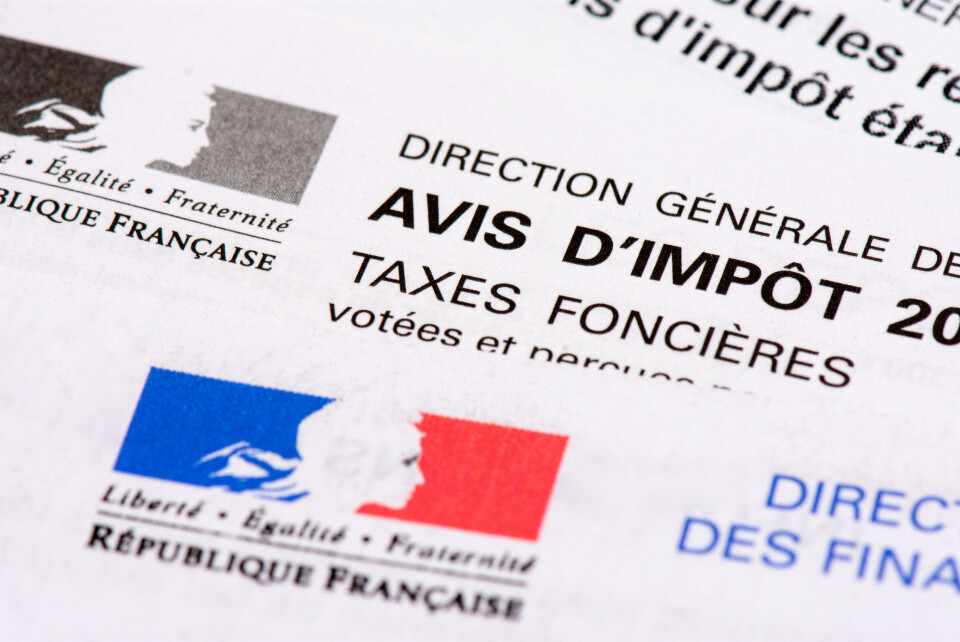-
Property tax deadline is extended in France after website crashes
Thousands logged on simultaneously to pay their taxe foncière bill just before midnight deadline
-
2024 French property tax: which areas are seeing the highest rises?
We review how the taxe foncière is calculated, and which areas have seen the largest increase
-
French property tax hits owners of lower-value homes disproportionally
Taxe foncière represents up to two months of mortgage repayments in some areas. We also look at reductions and exemptions
Which French towns or cities hiked their property taxes the most?
Take a look at our full list to see if your corner of France is affected

A new study has revealed the extent to which French towns or cities have increased their property tax this year.
It looked at communes with more than 40,000 inhabitants. Overall, 30 of 192 have hiked their taxe foncière.
Reasons given have included increased energy costs and loss of some other sources of income, notably due to the removal of the taxe d’habitation for all main homes (second-homeowners still have to pay it, barring any exemptions).
Central government grants are meant to compensate for the latter, but some communes claim they are not sufficient, and they resent the fact they have lost control over this funding source and cannot raise or lower it as they wish by voting for annual changes in their rates.
Paris, Meudon (in Hauts-de-Seine, south-west of Paris), and Grenoble were those with the highest increases this year, according to the report by local finance specialist FSL, which looked at taxe foncière on bricks-and-mortar property (as opposed to on plots of land),
Some communes, however, decreased their rates, including Saint-Louis (Haut-Rhin), Wattrelos (Nord), and Compiègne (Oise).
The average increase in 2023 was 1.7%, the study shows.
This is a higher rise than the average increase in 2022 (1.4%), which was already higher than in the previous five years (the average hike in 2021 was just 0.5%).
The rises relate to the amount by which councils increased their own percentage rate, which has a direct knock-on effect on the overall amount of the tax bill (see below).
What is France’s taxe foncière?
Taxe foncière is a property tax payable – barring exemptions – if you owned French property on January 1 of a given year. It applies to houses and flats as well as their adjoining facilities and gardens (and many kinds of commercial buildings.
There is also a version called taxe foncière sur les propriétés non-bâties for land with no associated buildings.
The revenue goes to your mairie and in some areas a part goes to an intercommunal body, to fund local schools, sports facilities, roadworks, or similar.
Taxe foncière bills are calculated each year based on the amount that the property could, in theory, be rented out for – this is called its valeur locative cadastrale (VLC) and it rises annually with the consumer price index.
For example, as consumer website UFC-Que Choisir explains, if your VLC was €2,000 in 2022, it would rise to €2,140 in 2023, due to a national rise in the VLC’s of around 7% this year.
The VLC is then halved, to take account of expenses such as maintenance, insurance and repairs, and then has a percentage rate applied to it that is voted on by your local authorities. This gives the tax payable.
With regard to rises in the percentage rates, for example, if a council had a rate of 10% last year and this year voted for 15% this would represent a 50% rise compared to 2022.
Read more: Taxe foncière France’s local property tax: Who pays and the exemptions
Read more: Taxe foncière, taxe d’habitation: how are these worked out in France?
Which French towns and cities have increased or decreased their taxe foncière rates?
Biggest increases (more than 10%)
- Paris: Increase of 51.9%
- Meudon (Hauts-de-Seine): 35.1%
- Grenoble (Isère): 24.4%
- Bobigny (Seine-Saint-Denis): 18.5%
- Troyes (Aube): 14.4%
- Livry-Gargan (Seine-Saint-Denis): 14.1%
- Metz (Moselle): 13.4%
- Courbevoie (Hauts-de-Seine): 13%
- Issy-les-Moulineaux (Hauts-de-Seine): 12.5%
- Corbeil-Essonnes (Essonne): 11.3%.
Decreases
- Brive-la-Gaillarde (Corrèze): A drop of 0.8%.
- Compiègne (Oise): -1%
- Saint-Louis (Haut-Rhin): -2.9%
- Tarbes (Hautes-Pyrenees): -0.8%
- Wattrelos (Nord): -1.5%
Full A-Z list (those in bold have increased taxe foncière rates)
This list shows the 192 French cities or towns with more than 40,000 residents and whether or not they increased their taxe foncière rate.
A
Aix-en-Provence, Ajaccio, Albi, Alès, Alfortville, Amiens, Angers, Angoulême, Annecy, Antibes, Antony, Argenteuil, Arles, Arras, Asnières-sur-Seine, Aubagne, Aubervilliers, Aulnay-sous-Bois, Avignon,
B
Bagnolet, Baie-Mahault, Bastia, Bayonne, Beauvais, Belfort, Besançon, Béziers, Blois, Bobigny, Bondy, Bordeaux, Boulogne-Billancourt, Boulogne-sur-Mer, Bourg-en-Bresse, Bourges, Brest, Brive-la-Gaillarde, Bron
C
Caen, Cagnes-sur-Mer, Calais, Caluire-et-Cuire, Cannes, Carcassonne, Castres, Cergy, Chalon-sur-Saône, Châlons-en-Champagne, Chambéry, Champigny-sur-Marne, Charleville-Mézières, Chartres, Châteauroux., Chelles, Cherbourg-en-Cotentin, Choisy-le-Roi, Cholet, Clamart, Clermont-Ferrand, Clichy-la-Garenne, Colmar, Colombes, Compiègne, Corbeil-Essonnes, Courbevoie, Créteil
D
Dijon, Douai, Drancy, Dunkirk
E
Épinay-sur-Seine, Évreux, Évry-Courcouronnes
F
Fontenay-sous-Bois, Fort-de-France, Fréjus
G
Gap, Garges-lès-Gonesse, Gennevilliers, Grasse, Grenoble
H
Hyères
I
Issy-les-Moulineaux, Istres, Ivry-sur-Seine
L
La Courneuve, La Roche-sur-Yon, La Rochelle, La Seyne-sur-Mer, Laval, Le Blanc-Mesnil, Le Cannet, Le Havre, Le Lamentin, Le Mans, Le Tampon, Les Abymes, Levallois-Perret, Lille, Limoges, Livry-Gargan, Lorient, Lyon
M
Maisons-Alfort, Mantes-la-Jolie, Marcq-en-Baroeul, Marseille, Martigues, Massy, Meaux, Melun, Mérignac, Metz, Meudon, Montauban, Montluçon, Montpellier, Montreuil, Montrouge, Mulhouse
N
Nancy, Nanterre, Nantes, Narbonne, Neuilly-sur-Seine, Nice, Nîmes, Niort, Noisy-le-Grand, Noisy-le-Sec, Orléans
P
Pantin, Paris, Pau, Perpignan, Pessac, Poitiers, Puteaux
Q
Quimper
R
Reims, Rennes, Rezé, Rosny-sous-Bois, Roubaix, Rouen, Rueil-Malmaison
S
Saint-André, Saint-Brieuc, Saint-Denis, Saint-Denis de-la-Réunion, Saint-Etienne, Saint-Germain-en-Laye, Saint-Herblain, Saint-Laurent-du-Maroni, Saint-Louis, Saint-Malo, Saint-Maur-des-Fossés, Saint-Nazaire, Saint-Ouen, Saint-Paul de la Réunion, Saint-Pierre, Saint-Priest, Saint-Quentin, Salon-de-Provence, Sarcelles, Sartrouville, Sète, Sevran, Strasbourg, Suresnes
T
Talence, Tarbes, Thionville, Toulon, Toulouse, Tourcoing, Tours, Tremblay-en-France, Troyes
V
Valence, Valenciennes, Vannes, Vaulx-en-Velin, Vénissieux, Versailles, Villeneuve d'Ascq, Villeurbanne, Vincennes, Vitrolles, Vitry-sur-Seine
W
Wattrelos
Related articles
Plan for cap on French taxe foncière increases to be abandoned
























